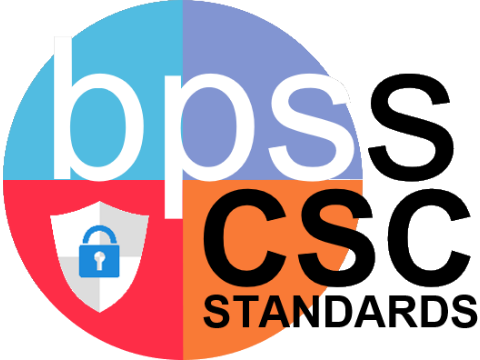BPS District Computer Science and Cybersecurity Standards Book
K-12 Grade Levels
Grade 10
CSC-10.TS TS Technology Systems
Sub-Concepts
(NI) Network & Internet - Networks link computers and devices locally and around the world allowing people to access and communicate information.
(HS) Hardware & Software - Devices, hardware, and software work together as a system to accomplish tasks..
(T) Troubleshooting - Strategies for solving technology system problems.
- CSC-10.TS_NI.1 Identify and define different network connection types (e.g., wifi, mobile data, ethernet).
- CSC-10.TS_NI.2 Identify networkable devices.
- CSC-10.TS_HS.1 Compare and contrast appropriate device/hardware/software to complete a task. (Continued growth)
- CSC-10.TS_HS.2 Recognize the importance of and effectively perform software and security patches/updates. (CYSEC)
- CSC-10.TS_HS.3 Identify important data or systems that need redundancy. (CYSEC)
- CSC-10.TS_T.1 Follow appropriate guidelines that convey systematic troubleshooting techniques to identify and fix errors.
CSC-10.CT CT Computational Thinking
Sub-Concepts
(PSA) Problem Solving & Algorithms - Strategies for understanding and solving problems.
(DCA) Data Creation & Analysis - Data can be collected, used, and presented with computing devices or digital tools.
(DD) Development & Design - Design processes to create new, useful, and imaginative solutions to problems.
- CSC-10.CT_PSA.1 Create and test an algorithm to solve a complex problem across disciplines.
- CSC-10.CT_DCA.1 Represent complex data in more than one way to support a claim.
- none
CSC-10.IL IL Information Literacy
Sub-Concepts
(A) Access - Effective search strategies can locate information for intellectual or creative pursuits.
(E) Evaluate - Information sources can be evaluated for accuracy, currency, appropriateness, and purpose.
(C) Create - It is important to both consume and produce information to be digitally literate.
(IP) Intellectual Property - Respect for the rights and obligations of using and sharing intellectual property.
- CSC-10.IL_A.1 Curate relevant information from digital resources using a variety of tools and methods.
- CSC-10.IL_E.1 Gather accurate, credible, and relevant sources of information, media, data, or other resources showing different perspectives.
- CSC-10.IL_C.1 Choose the appropriate platforms and tools for meeting the desired objectives of their creation or communication.
- CSC-10.IL_IP.1 Demonstrate an understanding of and respect for the rights and obligations of using and sharing intellectual property.
- CSC-10.IL_IP.2 Cite sources in a standard format to ethically reference the intellectual property of others. (Continued growth)
- CSC-10.IL_IP.3 Engage in positive, safe, legal and ethical behavior when using technology. (Continued growth)
CSC-10.CS CS Computers in Society
Sub-Concepts
(IC) Impacts of Computing - Past, present, and possible future impact of technology on society.
(SI) Social Interactions - Technology facilitates collaboration with others.
- CSC-10.CS_IC.1 Evaluate the social, personal, and economic implications technology has on society and the economy.
- CSC-10.CS_SI.1 Evaluate the impacts of technology on social interactions.
CSC-10.DC DC Digital Citizenship
Sub-Concepts
(SE) Safety & Ethics - There are both positive and negative impacts in social and ethical behaviors for using technology.
(RU) Responsible Use - Respect and dignity in virtual communities.
(DI) Digital Identity - Responsibilities and opportunities of living, learning and working in an interconnected digital world.
- CSC-10.DC_SE.1 Implement best practices to secure personal information. (CYSEC)
- CSC-10.DC_SE.2 Recognize the importance of monitoring your private data. (CYSEC)
- CSC-10.DC_SE.3 Manage personal data to maintain digital privacy and security and are aware of data-collection technology used to track online behaviors. (CYSEC)
- CSC-10.DC_SE.4 Identify if their private data has been altered and can react appropriately. (CYSEC)
- CSC-10.DC_RU.1 Apply cyberbullying prevention strategies. (Continued growth)
- CSC-10.DC_RU.2 Apply safe and ethical behaviors to personal electronic communication and interaction. (CYSEC) (Continued growth)
- CSC-10.DC_RU.3 Use appropriate digital etiquette in a variety of situations. (Continued growth)
- CSC-10.DC_RU.4 Understand the purpose of and comply with Acceptable Use Policies.
- CSC-10.DC_DI.1 Manage a digital identity and be aware of the permanence of actions in the digital world. (CYSEC) (Continued growth)





